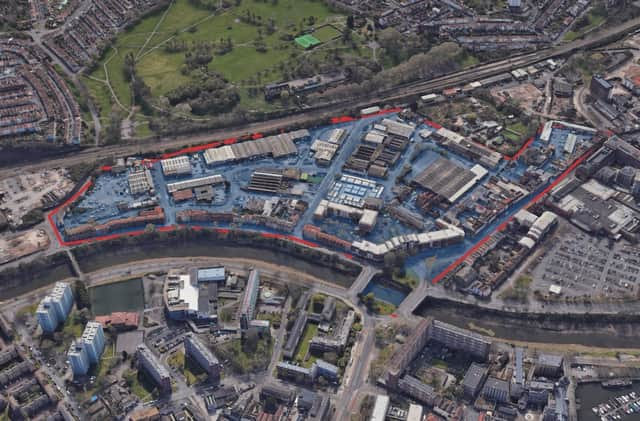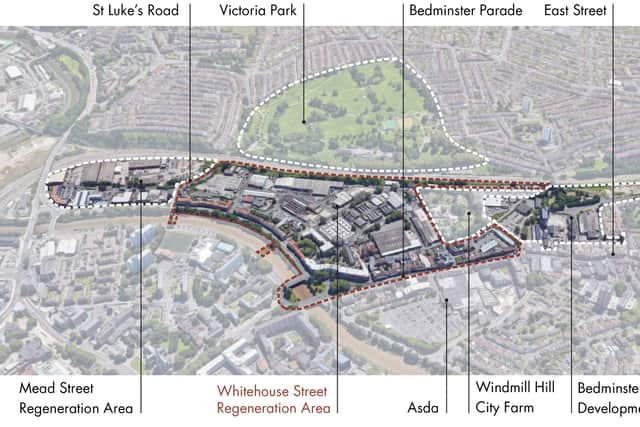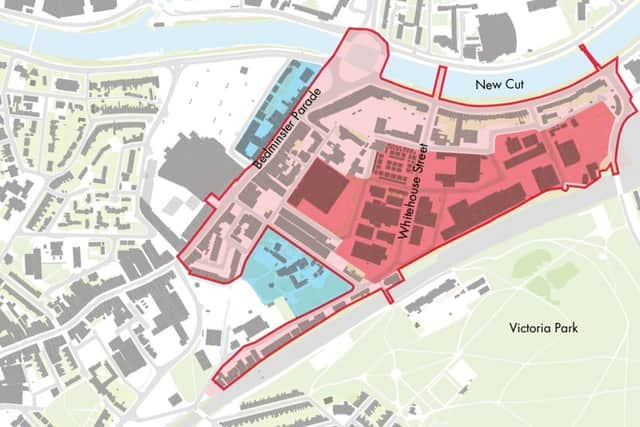Green light for major regeneration project in South Bristol with 2,000 new homes


City Hall chiefs have given the green light for a major regeneration project in South Bristol including 2,000 new homes.
A master plan for the area around Whitehouse Street in Bedminster has been approved, paving the way for a complete transformation of the area.
Advertisement
Hide AdAdvertisement
Hide AdThe area is home to light industrial businesses and car garages currently but will radically change over the next 15 years. A regeneration framework, now approved by Bristol City Council’s cabinet, will guide how developers plan to build new flats and businesses.
Regenerating the area will include building cycle lanes and a new bridge over the New Cut, and reopening underground parts of the River Malago. The cabinet approved the framework during a meeting on Tuesday, (March 7), marking a major step forward in the huge project.
Local councillors welcomed the regeneration project but raised concerns that few of the new homes will be classed as affordable. The council has a policy elsewhere in the city that 30% of new homes in a development should be affordable, but this will be cut back in the Whitehouse Street regeneration project to just 20% — potentially losing up to 200 affordable homes.
Green Councillor Tony Dyer, representing Southville, said: “It’s good to see permeability for walking and cycling as the proposals will add a large number of homes in an area already seeing considerable traffic problems. In order to encourage even more walking and cycling, we reiterate previous calls for additional bridges across the New Cut.
Advertisement
Hide AdAdvertisement
Hide Ad“We do have some concerns, especially the requirement for 30% affordable housing being relaxed. But in summary we welcome the framework and recognise the devil will be in the details and there’s still a lot of work for all of us to do to make this vision a reality.”


Labour Cllr Tom Renhard, cabinet member for housing, added: “You have to make some compromises at times, so slightly relaxing the affordable housing requirement has been one of them. There’s still a minimum of 20% we expect. We’re still committed to delivering policy compliant [housing] on the bits of land we’ve got.”
The area lies on the other side of the railway from Victoria Park, in the north-east edge of Bedminster. Parts of the land are owned by the council, as well as developers the Hill Group and Galliard Apsley. Cabinet approval of the regeneration framework follows a public consultation with help from community group Action Greater Bedminster.
The regeneration framework will guide and influence individual developments in the area. This means developers will have to follow the vision set out by the council when applying for planning permission. The framework also sets out how the council plans to improve public spaces around Whitehouse Street, for example building new cycle lanes.
Advertisement
Hide AdAdvertisement
Hide AdA cycle lane is planned to run along Whitehouse Lane and Princess Street, linking up to a separate regeneration project to the east in Mead Street, and eventually running to a future southern entrance to Temple Meads train station. A third regeneration project is already underway to the west, around Bedminster Green.
A new bridge could also be built over the New Cut near the northern end of Whitehouse Street. Meanwhile Bedminster Bridge could be upgraded, to make crossings easier for pedestrians and cyclists. The Banana Bridge could also be made more accessible, as steps currently impede access for people in wheelchairs or using pushchairs.
It’s unclear exactly how tall the new buildings will be, and this will become clearer as individual planning applications come forward. But the regeneration framework says some parts will have buildings three to four storeys high, with other parts including buildings up to eight storeys high. Efforts will be made to avoid blocking views from Victoria Park.


The new buildings are likely to be connected to the district heat network, avoiding the need for gas boilers which use fossil fuels and emit greenhouse gases. And the nearby River Malago, which is culverted in some places, will be opened up and restored in a boost for local wildlife habitats.
Advertisement
Hide AdAdvertisement
Hide AdLabour Cllr Nicola Beech, cabinet member for strategic planning, resilience and floods, said: “This will be a real vote of confidence for City Leap, who are already on site in Bedminster delivering the heat network at the moment. It’s not been without inevitable disruption, but it’s absolutely the right thing to do and the only way to build homes in this city in future.
“Removing culverted rivers, from an ecological perspective, is absolutely the right thing to do. It’s not without its disruption, great things only happen when other things have to change. But it’s something we will look back on over the years and we will never regret the decision to open up the Malago and bring back the river which has been hidden for so many years.”
Comment Guidelines
National World encourages reader discussion on our stories. User feedback, insights and back-and-forth exchanges add a rich layer of context to reporting. Please review our Community Guidelines before commenting.